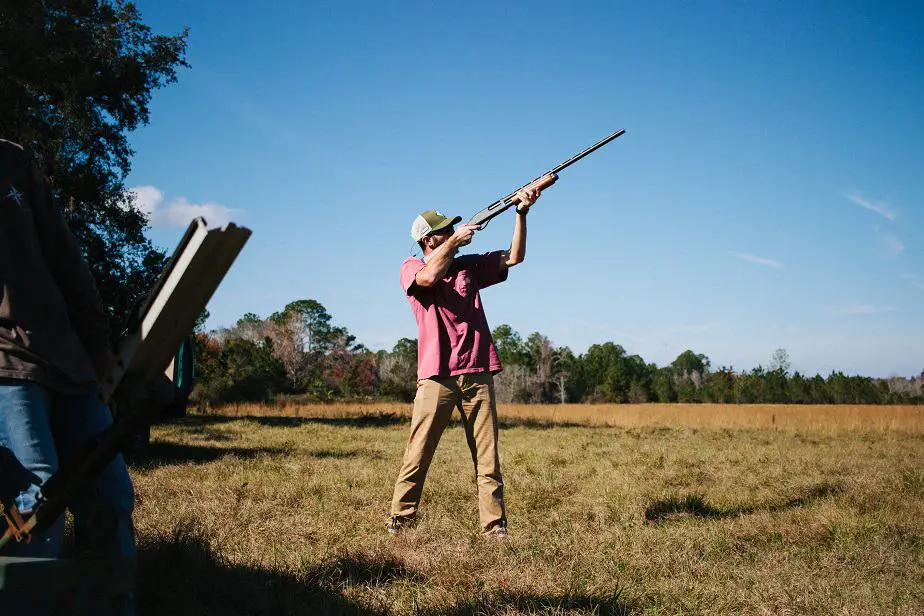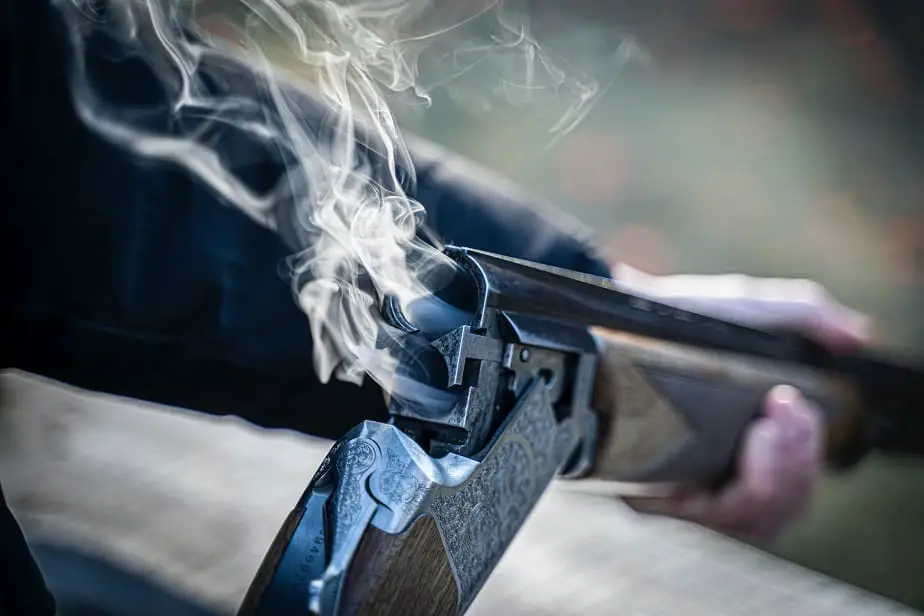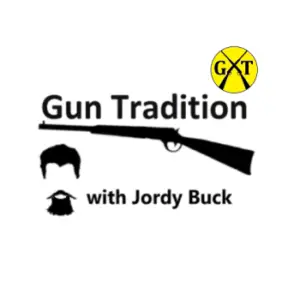My first and favorite gun is my 12-gauge shotgun. I wouldn’t part with it for the world.
12-gauge shotguns are used for hunting North American game animals from squirrel to moose. They are also used defensively, in tactical games, and in sporting clays. The 12-gauge shotgun is extremely versatile in payload and power level, which makes it suitable for most adult shooters.
The 12-gauge shotgun is the most multi-use, utility-friendly firearm in the world. It’s most common in the US but found in nearly every developed country.

What Can you Do with a 12-Gauge Shotgun?
Since sometime in the 1600s, the 12 gauge, or 12 bores, has been used for all sorts of warfare, hunting, and marksmanship games. Today, it’s most commonly used for, well just about everything. The most common use for the 12 gauge is hunting birds like ducks, geese, and pheasants.
The second most common use for a 12 gauge is as a home defense weapon. A lot of people, myself included, rely on the power and ballistic abilities of a 12 gauge to keep their family safe from threats of danger.
The 12 gauge as it is today, was first adapted for military use by US troops in WWI. It was rather effective in close-quarters trench warfare compared to the standard military rifles of the time. The Philippine Government still uses those WWI shotguns today for policing work.
Sport shooting, including trap, skeet, and 3-gun competition holds a fanatic base with the old 12 gauge. It delivers a heavy payload of shot covering a wide target area, without too much recoil for the average adult to comfortably handle. Most sport shooting shotguns are 12 gauge.
If you’re interested in hunting, a 12 gauge will likely take care of all your game getting needs. The shotgun is a short-range, powerful hunting tool. There is specific ammunition for virtually every game animal in North America, except maybe polar bear. Any other animal, there are proper loads for it.

Will a 12-Gauge Kill a Moose or Bear?
Heavy 12-gauge slugs are often used to hunt bears and moose. Buckshot and standard slugs will not work, but hard, heavy ones like Brenneke’s Magnum Crush and Black Magic Magnum will kill bears and moose up to 100 yards.
*Slugs are a single, solid projectile fired from a shotgun
For the big animals, you need the right bullets. Dealing with dangerous critters is no laughing matter, especially when you have to get somewhat close to them. Shotguns shed energy quickly at distances of over 50 yards, so you have to get closer than you would with a rifle.
It’s all because the bullets are not aerodynamic. They are big, heavy, slow down quickly. That’s a limitation of the design. However, they can be super powerful at 100 yards and under. For example, the two slugs I just mentioned have rated energy of 3,804 and 3,014-foot-pounds of energy right out of the gun. That’s ten times the energy of a 9mm pistol. At 100 yards, it goes down to 1,485 and 1,219.
Shotguns are powerful but lose energy quickly. In days past, hunters would take elephants with 6 and 4 gauge shotguns, but needed to get closer than 50 yards, which was a dangerous and nerve-wracking feat of hunting prowess. That takes some stones!
How Big is a 12-Gauge Shotgun?
12-Gauge shotguns average 7.6 pounds, 4 feet long, and have a median bore diameter of 0.729 inches. Most hold 5 to 7 shotshells. Some hold only 1 or 2. There are larger and smaller models to fit your body, specific taste, and preferred application.
My personal 12 gauge weighs 8.6 pounds fully loaded. It’s 46.5 inches long head to toe and holds 6 shotshells. It doesn’t feel heavy or hard to maneuver. That’s a good average 12 gauge, though a bit heavier than some.
Some of the shotguns designed for shooting sports are heavier so as to reduce the felt recoil. The heavier the gun the more energy it will absorb. That helps reduce bruising after finishing a standard 100 round match of skeet.
Generally, double-barrel shotguns are the heaviest ones. Shotguns used to weigh more than they do today, but advancements in recoil mitigation, as well as light metal alloys and strong plastics, have reduced the average weight a bit.

Does a 12-Gauge Have a lot of Recoil?
An average 12-gauge will create 17-30 ft/lbs. of recoil. 2 ¾ inch shotshells have less recoil than 3 and 3 ½ inch shotshells. The most powerful 3 ½ inch loads can have over 50 ft/lbs. of recoil, which is enough to knock you down. Increasing bullet weight or velocity will increase recoil.
That’s a pretty wide range of recoil. It’s also a wide range of power. For the average adult, up to 15 ft/lbs. is nothing to complain about. The 12 gauge just overshoots that. Some people will not appreciate even the lowest recoiling loads in a 12 gauge. They are generally under 150 pounds and small framed.
The average doesn’t worry about the recoil or the lighter rounds but will comment about the hard kick of anything over about 25 ft/lbs. of recoil. Most shooters are familiar that shotguns kick, and they are mentally prepared for it. They just accept it and ignore it. There is an old saying “it kicks harder on the other end”.

Cost of a 12-gauge Shotgun
The average 12-gauge shotgun costs $500, but popular models are available as low as $350. High-end shotguns cost $1,000 or more.
You don’t have to spend a fortune on shotguns, but if you want to you can. Most people looking to get a shotgun have a tight budget. No shame there. A great budget shotgun is the Mossberg 500. The various models sell for $300 t0 $450, and it’s the only shotgun made to US military specifications. It’s nothing fancy, but it works well. I bought one for my brother as a wedding gift.
I would avoid buying anything from Remington. After their second bankruptcy in a few years, they still haven’t learned that quality matters. Remington guns are currently junk. If they turn things around, I’ll edit this article.
12 Gauge Shotguns as a Home Defense Weapon
Most 12-gauge shotguns make an excellent home defense weapon. Shorter shotguns offer easier maneuverability in-home, while longer ones are more powerful. Birdshot is ideal at most home defense distances. It will not penetrate through walls and is safer for an urban environment.
I have a shotgun on my wall for home defense. It’s simple to operate, easy to use, and quite powerful. Most home defense shotguns are loaded with either birdshot or buckshot. Both have their strengths and weaknesses.
Buckshot is generally said to be more powerful than birdshot, but that’s not entirely true. Buckshot has larger pellets and each pellet carries more energy than smaller birdshot pellets. But, the shot charge as a whole can be equal.
The main difference is that buckshot penetrates deeper and has an extended range as opposed to birdshot. My shotgun is loaded with lead #7 birdshot. It will create a truly devastating wound at distances up to 20 feet, but not much further.
The reason I went with birdshot is I’m reasonable and rational. If I fire my shotgun in my home, the shot will almost certainly stay in my home and not endanger anyone else in the neighborhood. 12-gauge birdshot is powerful, but the power is dispersed quickly after striking a target.
It doesn’t have much practical distance, but neither do most houses. In an area where over-penetration is not a concern, like out in the country, buckshot can be a good choice. But if you have neighbors or other people in your house, consider things before firing bullets around.
Shotguns that hold multiple rounds and have accessories like a strong flashlight and a laser sight are very common for home defense because they make it easier to identify your target and to aim in a panicking situation.
If you want to know more, I wrote an entire article on using birdshot for home defense. You can find it here.
What Kind of Ammo is Available for a 12-Gauge?
The three types of common shotgun ammunition are birdshot, buckshot, and slugs. Birdshot is for small game, buckshot is for a medium game like deer and coyotes, and slugs are for large game. Slugs and buckshot are used in military, tactical, and home defense applications so well.
Birdshot starts at size 12-1, which makes some sense, except then it goes to B, BB, BBB, and T. I have no idea where those last four came from. Number 12 has a diameter of .05 in, number 1 is 0.16, and T is 0.2 in.
Buckshot ranges from 4 to 1, then goes to 0 (pronounced “aught”) 00 (double aught), and 000 (triple aught). Number 4 buckshot is .24 in, and 000 is .36 in. That’s the diameter of a 9mm pistol bullet.
12-gauge slugs are solid, usually lead or copper, and approximately .729 inches in diameter. They range from half an ounce to 1.5 ounces. They can be designed for a standard, smoothbore, or a rifled bore, specialized for shooting slugs.
Best 12-Gauge Deer Loads
The best 12 Gauge loads for deer are 00 buckshot (to 50 yards), Brenneke style slugs (to 100 yards), and Sabot slugs (to 150 yards). Foster-style slugs are good for under 100 yards but offer less accuracy than Brenneke slugs or sabots.
Best 12-Gauge Turkey Loads
A good 12-gauge turkey load has 1 ½ ounce of number 4 or 6 lead shot going over 1,200 fps. Copper, bismuth, and tungsten shot are also used, but lead is the most cost-effective. Specific brands are not as important as finding one that shoots well out of your specific barrel.
Best 12-Gauge Shotshells for Coyote Hunting
The Very best Shotshells for coyote hunting are Hornady Varmint Express and Hornady Heavy magnum Coyote. They come in BB, #4 buck, and 00 buck, which is great choices. They perform exceptionally from most shotguns. The 00 buck has the farthest lethal distance.

